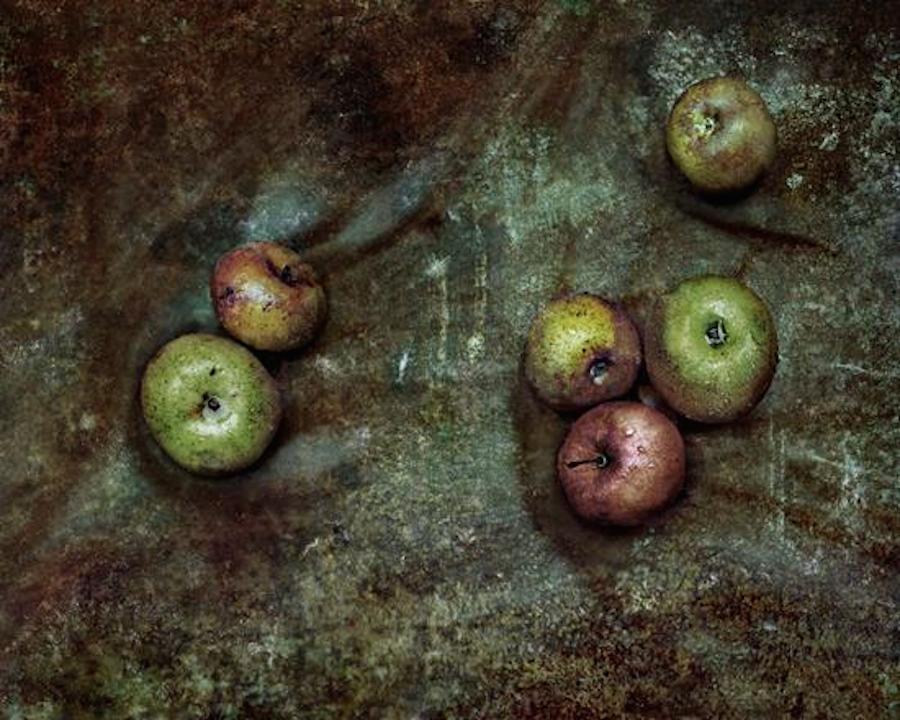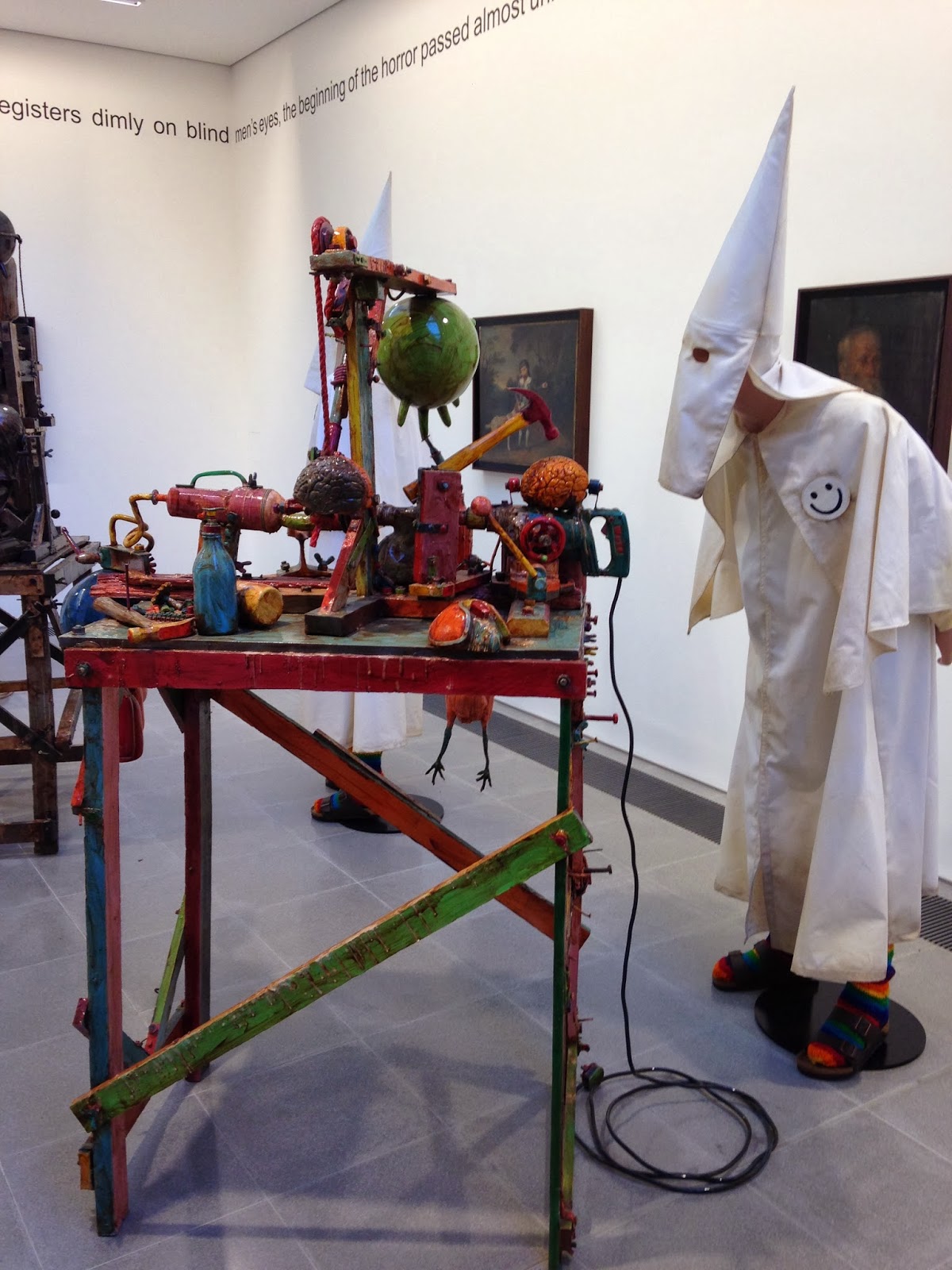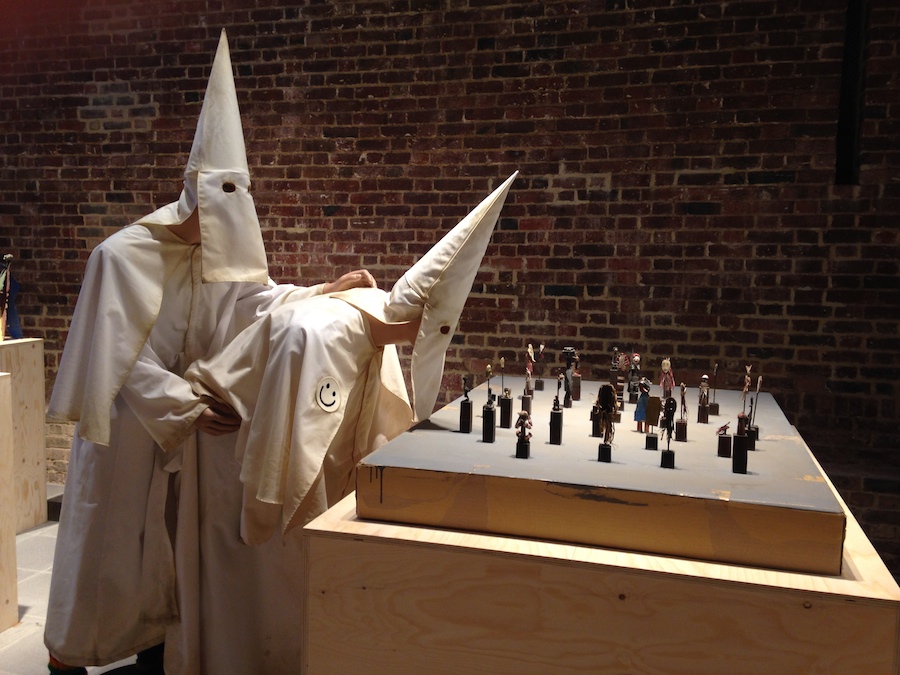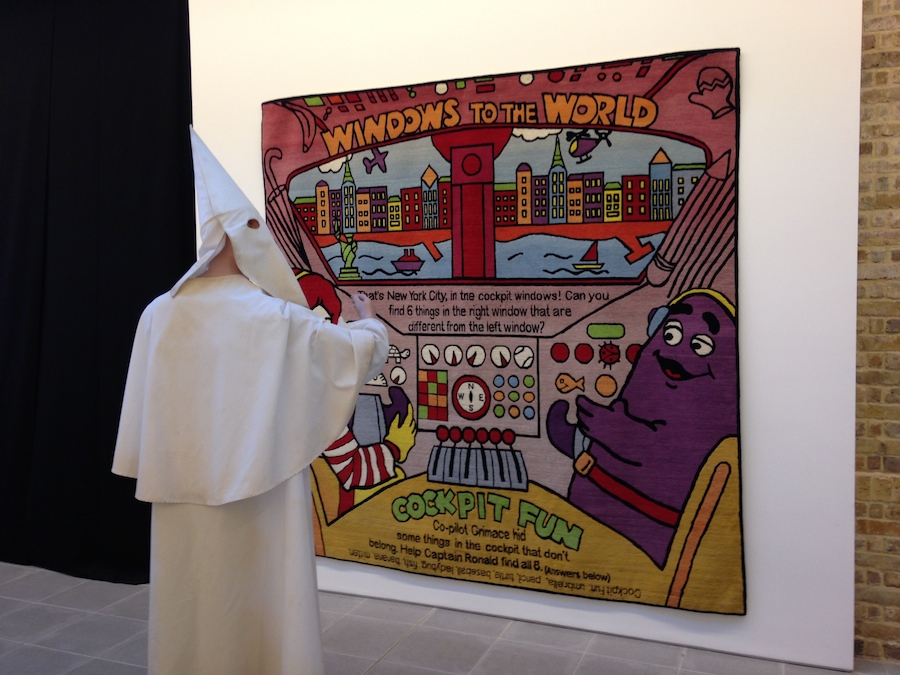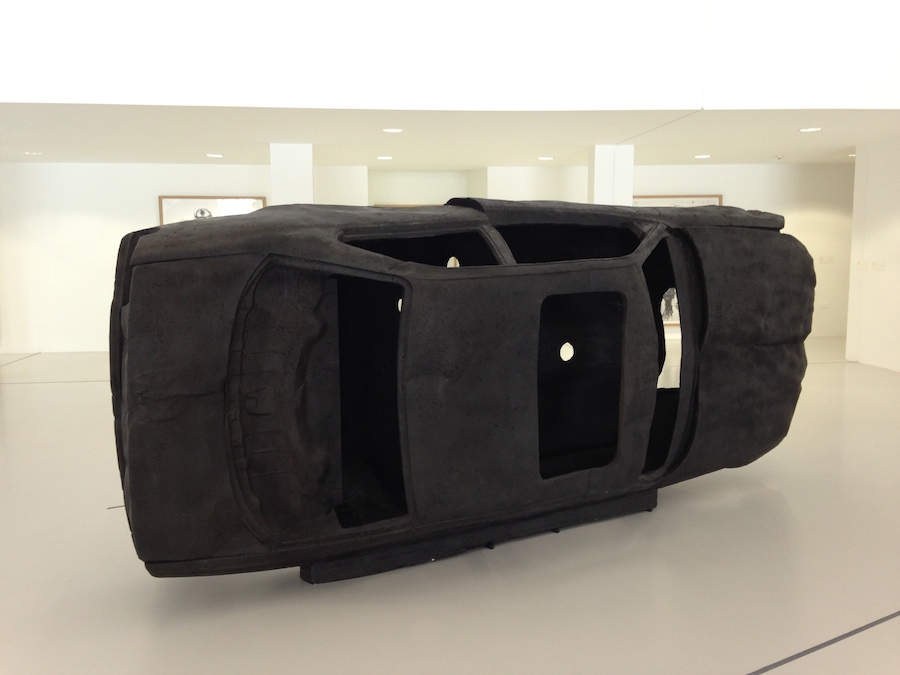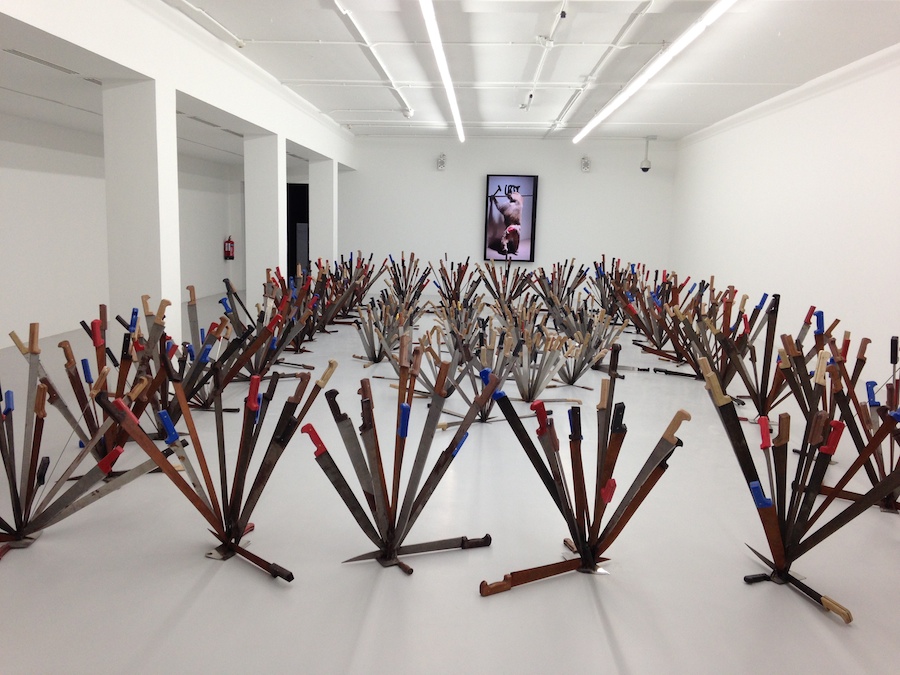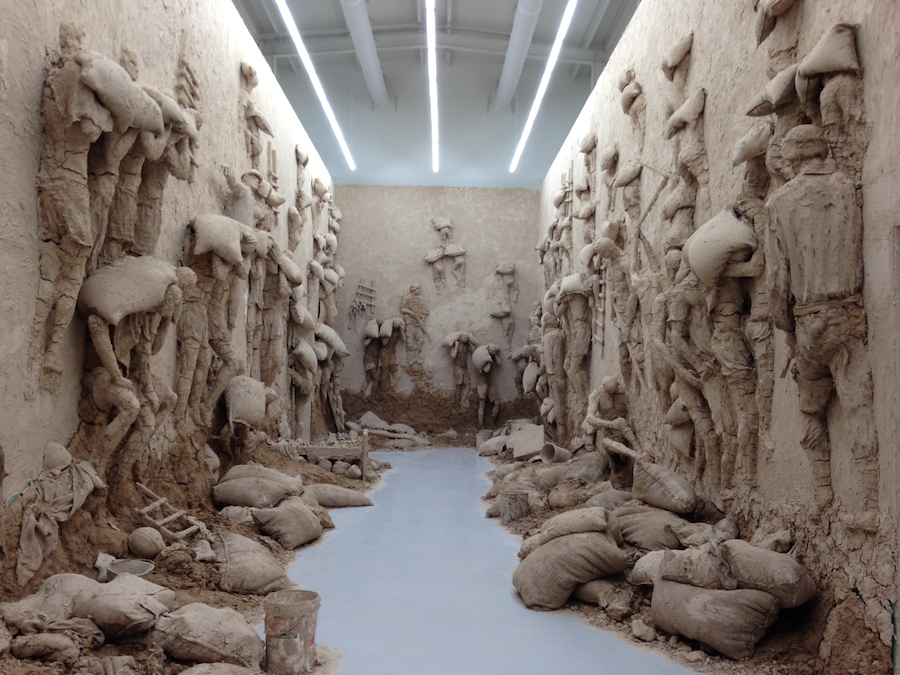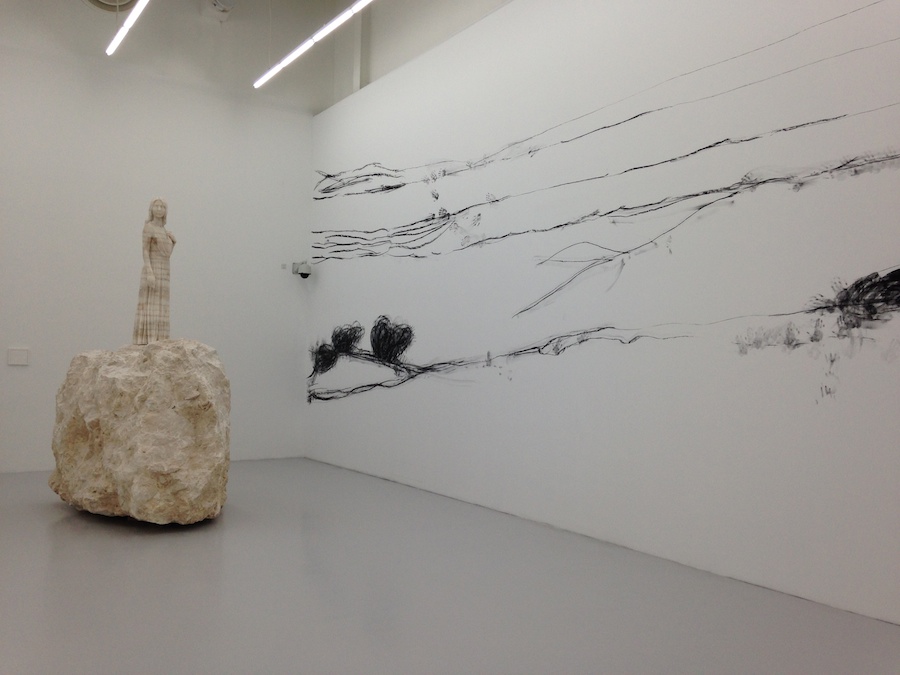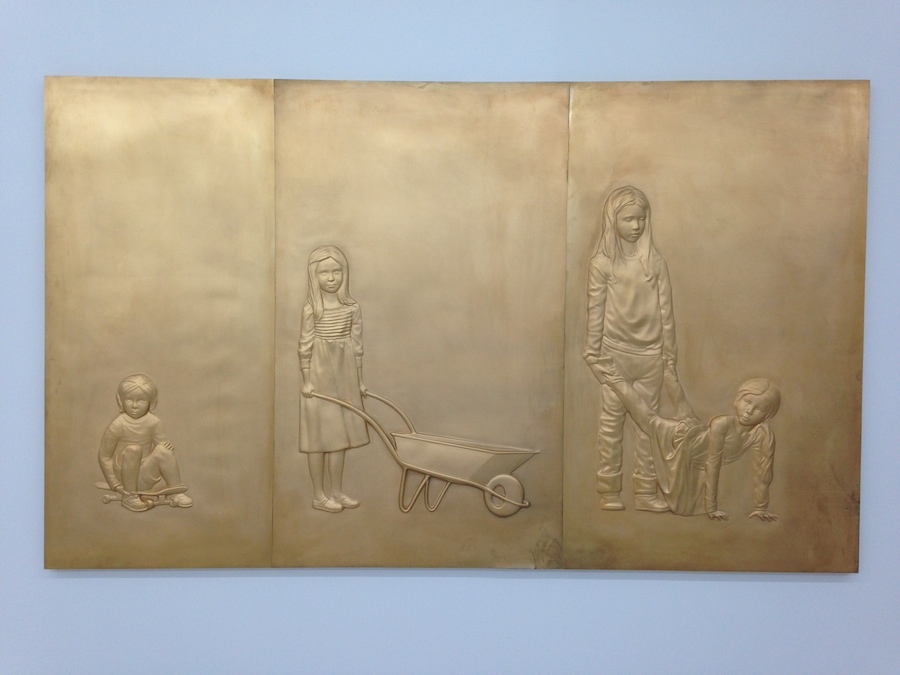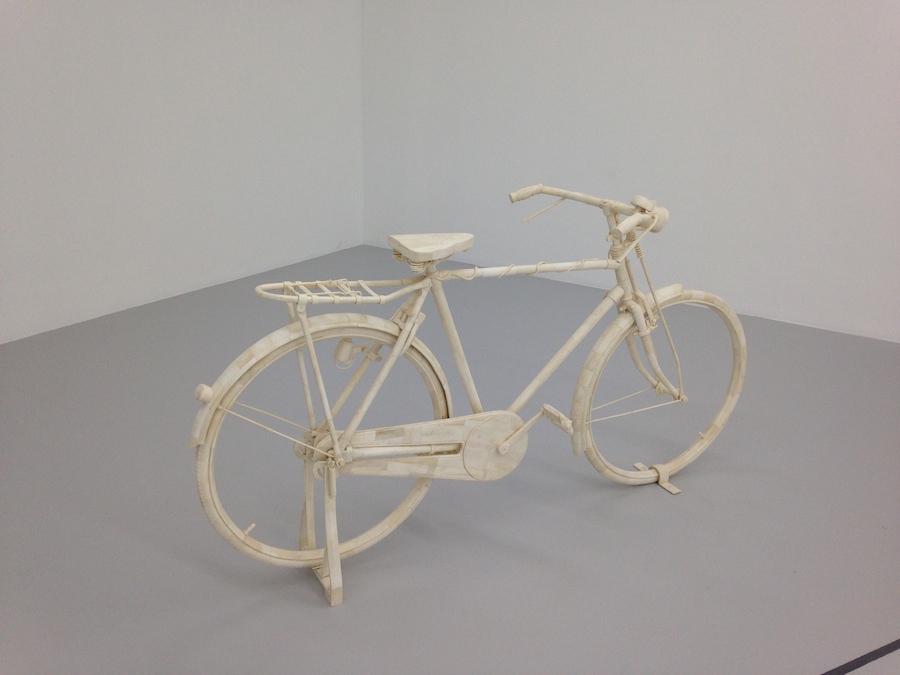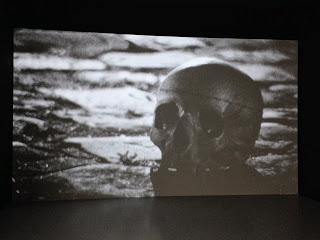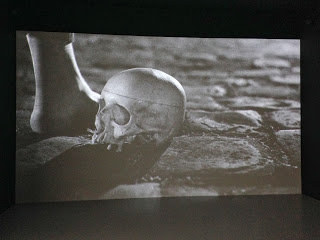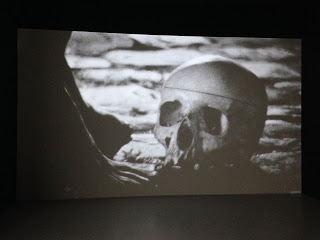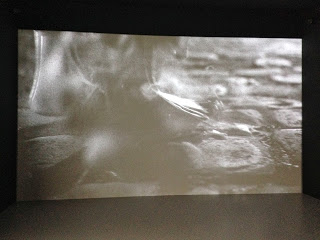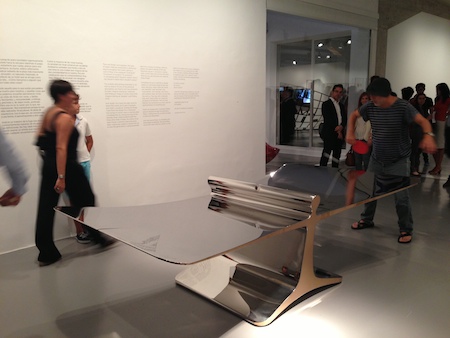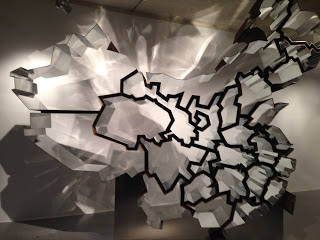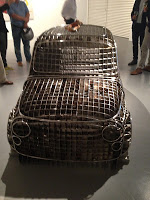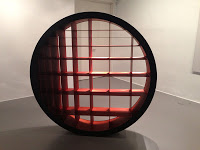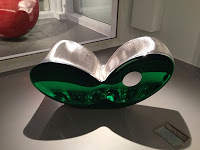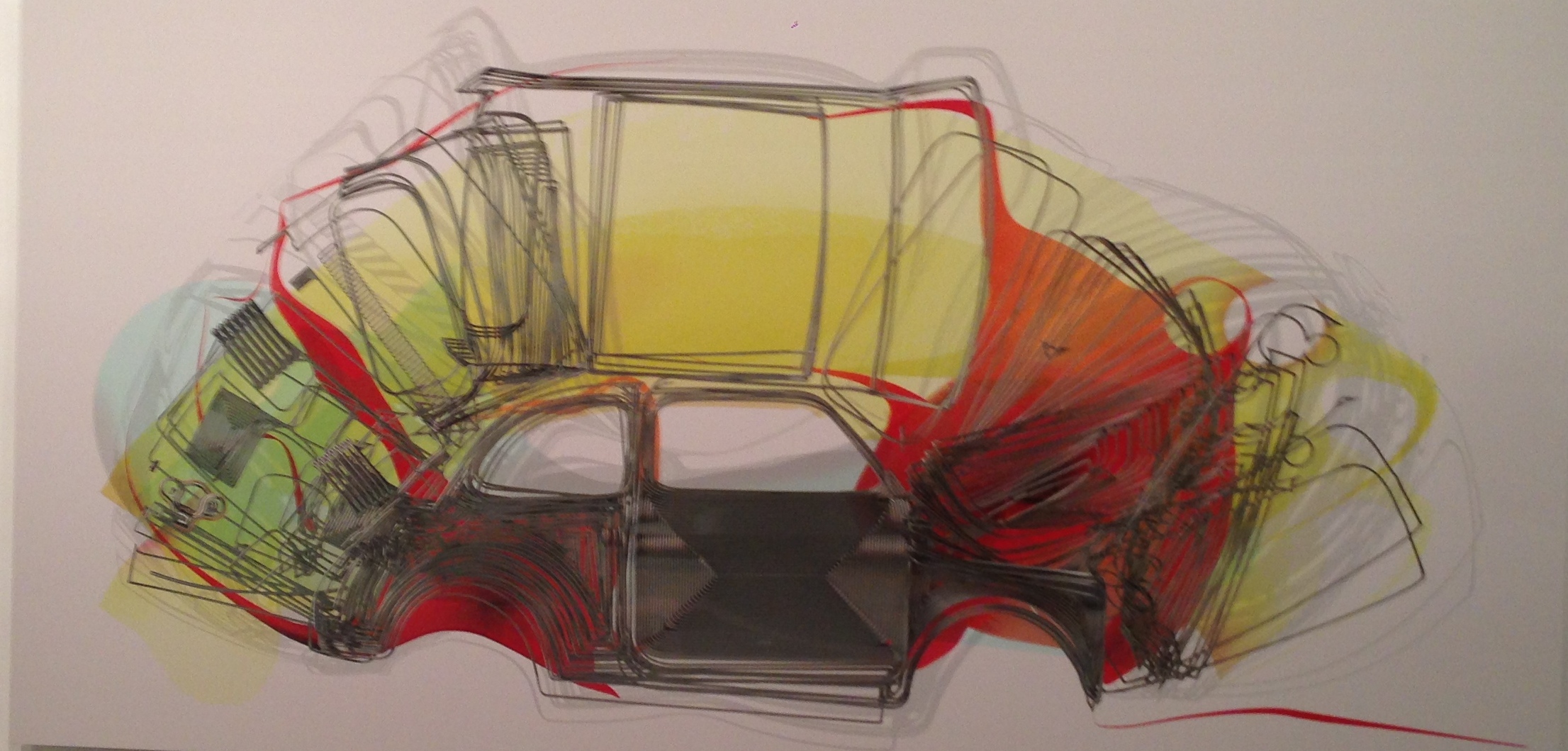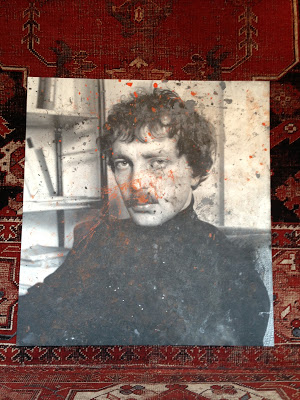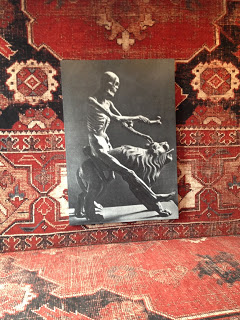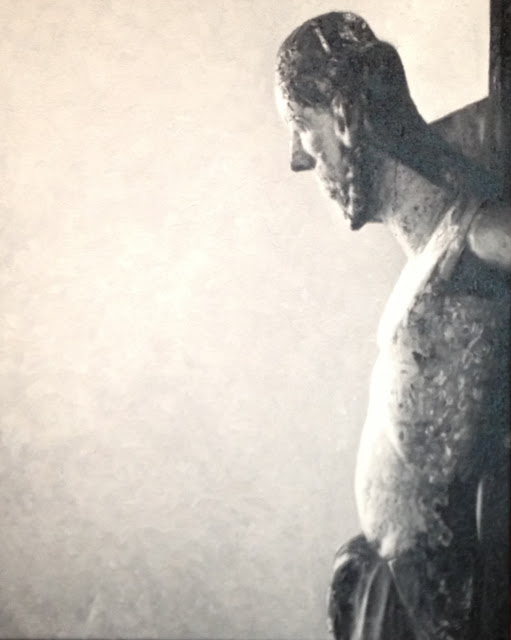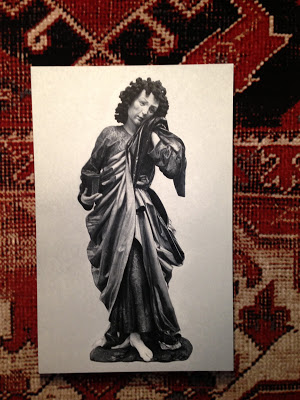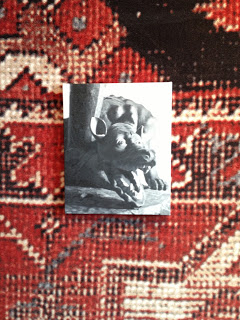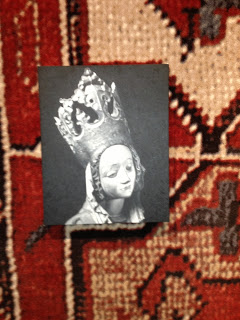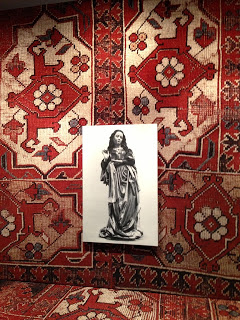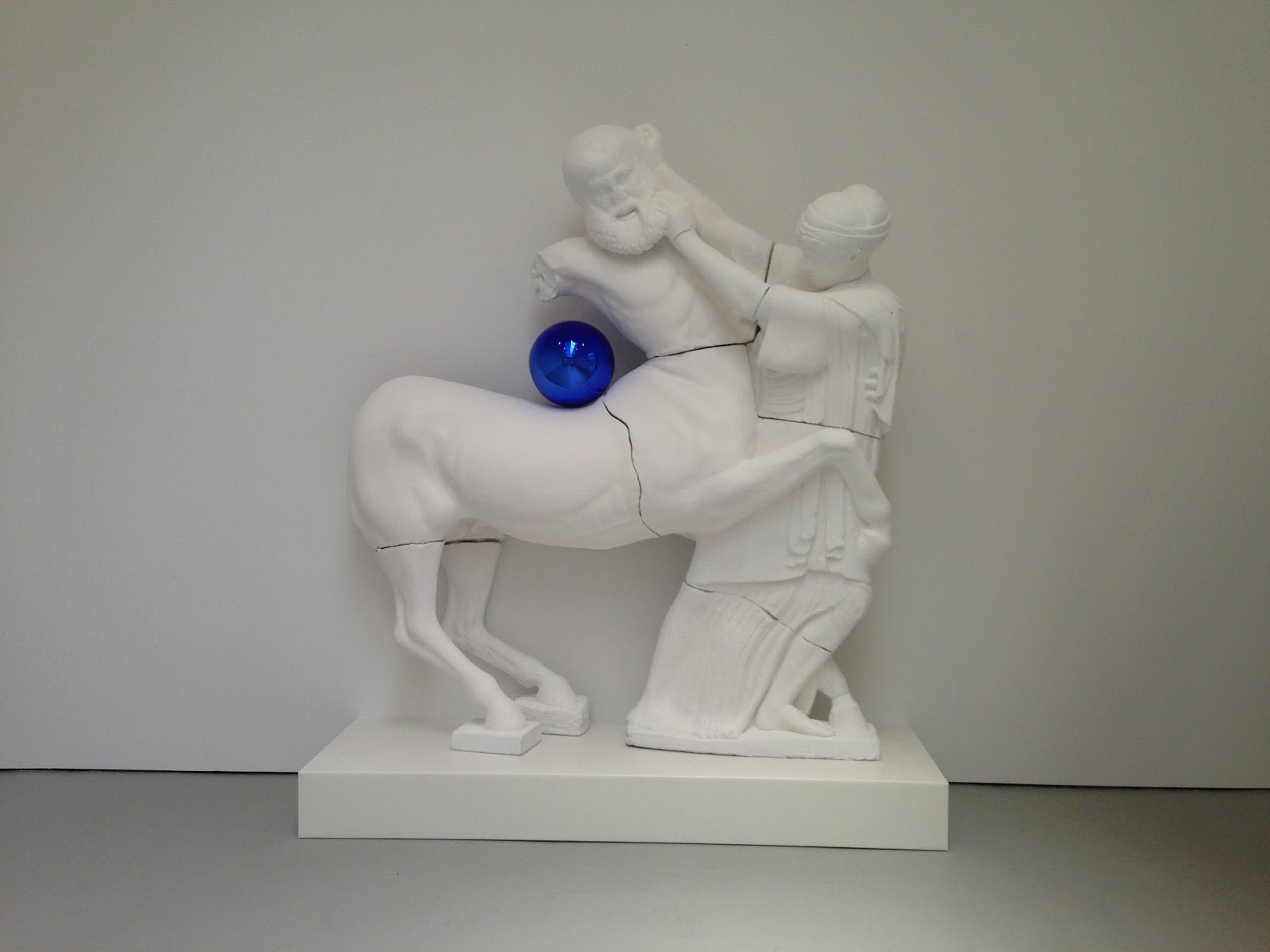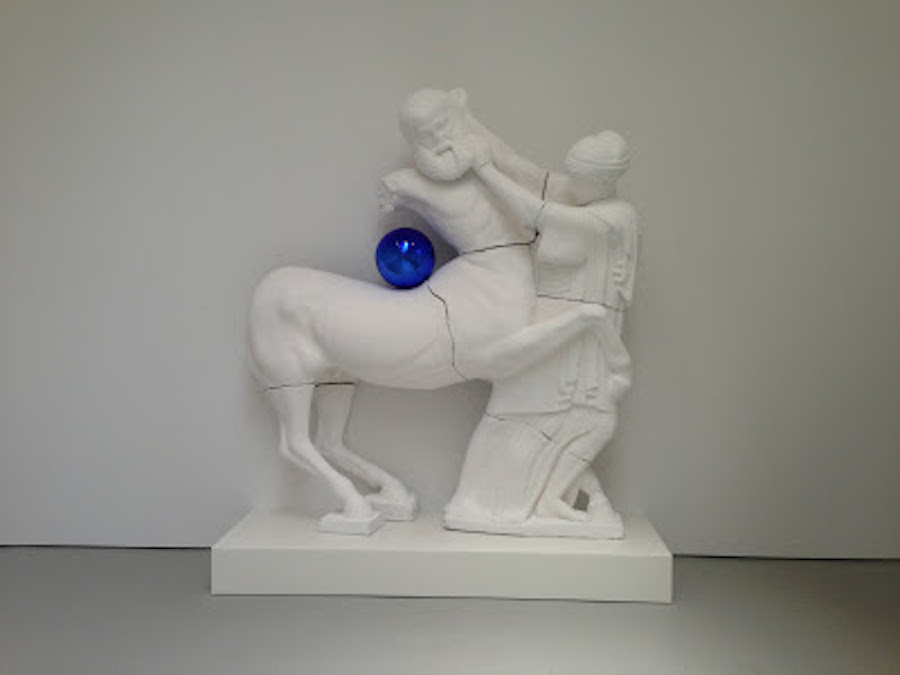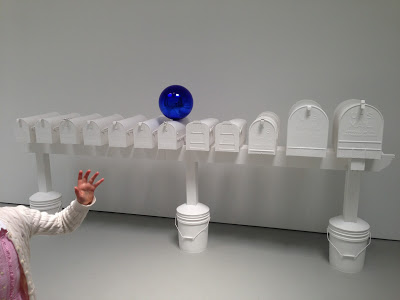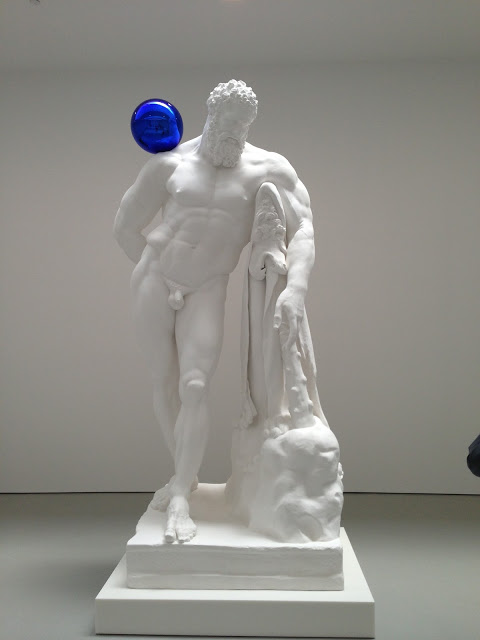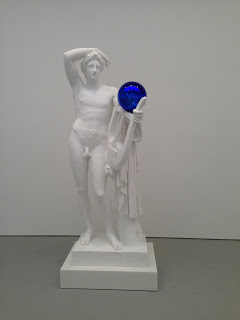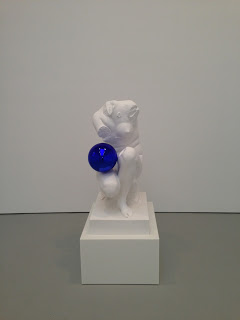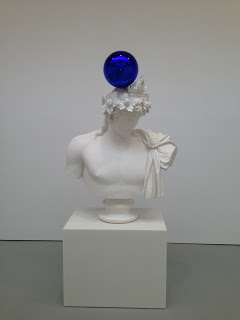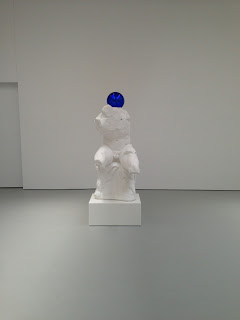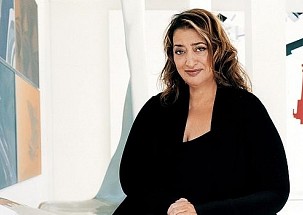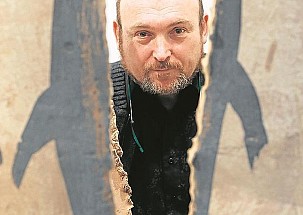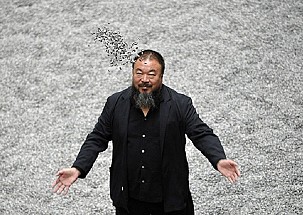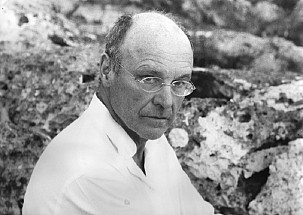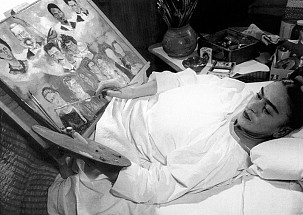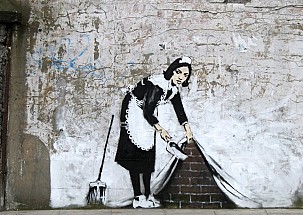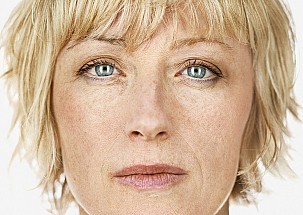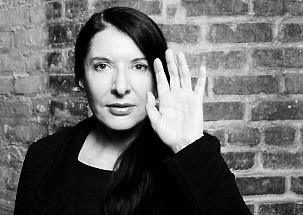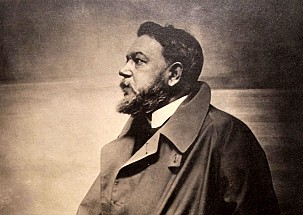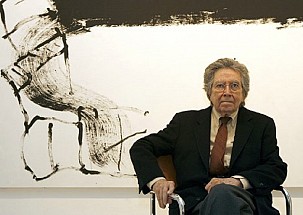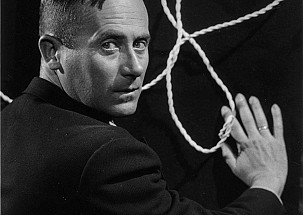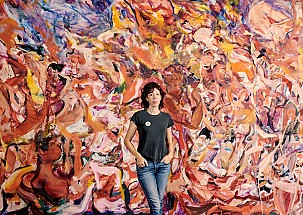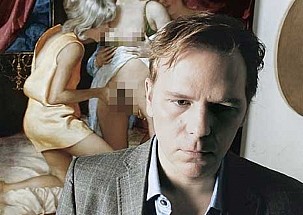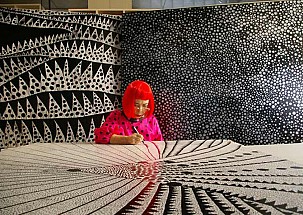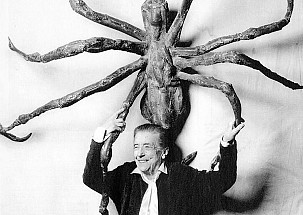- Details
- Written by Maira Herrero
|
Contributor: Maira Herrero, |
 |

My first encounter with the fascinating world of 47-year-old Copenhagen-born Ólafur Elíasson was over a decade ago, in October 2003 in London’s Tate Modern. I found myself before an incredible installation that took up the entire entrance of the museum (Turbine Hall). I was greatly taken aback: light, colour and sound enveloped me so intensely that I actually thought I was seeing a real twilight sun in front of me. Reality and fiction started merging in my head, flinging me and the other visitors in the hall into a whole new dimension of perception. I have been following the artist consistently since then, an artist I consider to be one of the most established in the contemporary international art scene. His artwork, via sensory, imaginative and technical means, offers viewers a range of possibilities for its interpretation.
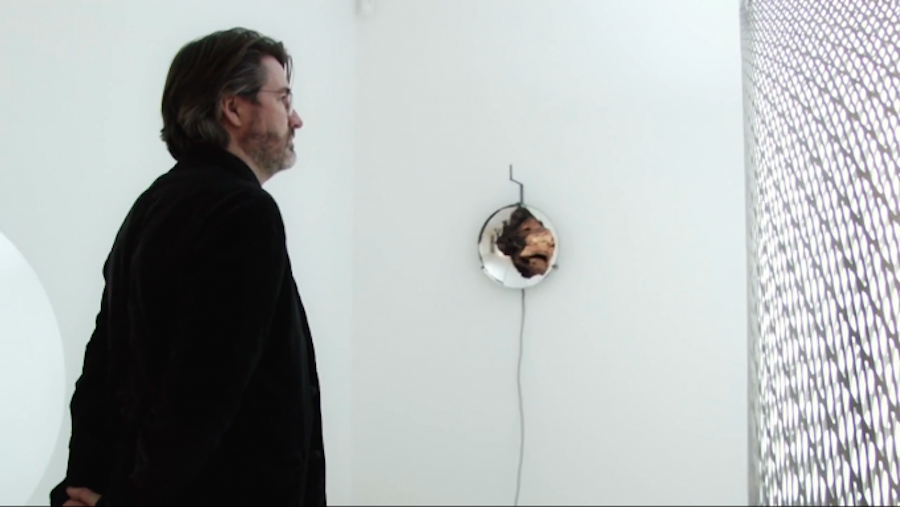
On February 21, Ólafur Elíasson presented his second exhibition, Your Successful Uncertainty, at the Elvira González Gallery in Madrid, the curious title once again representing a nod to the visitor, and a subtle reminder that interaction is a key element of his art. This is not the first time Elíasson starts his artwork titles with the possessive pronoun: Your Uncertain Shadow, Your Blind Movement…
This exhibition is part of Alejandra de Argos’ selection of the Top 10 Exhibitions in Madrid.
The works included in this exhibition are formally very different from one another, yet they all relate to this relationship which is always present in Elíasson’s work: nature as a creative force, and science through method, as answers to life’s endless questions. Elíasson is an explorer in the true sense of the word: he explores and searches through contact with the natural world, which he then represents in his images, such as the ones included in this exhibition (The Hot Spring Series); he picks up pieces of wood on his long walks, transforming them into artworks full of aesthetic and technical meaning (Access Compass); he experiments with everyday materials, such as a decomposing mirror attached by a magnet to a meteorite found in New Mexico; or he reminds us of the importance of water on our planet through an inverted cataract (Waterfall Machine). His works always relate to space as a reflection of movement, light, weather, the experience of life, etc. For Elíasson, the simple act of walking creates space and time (Leer es respirar, es devenir. Escritos de Ólafur Elíasson. GG, Barcelona 2012).
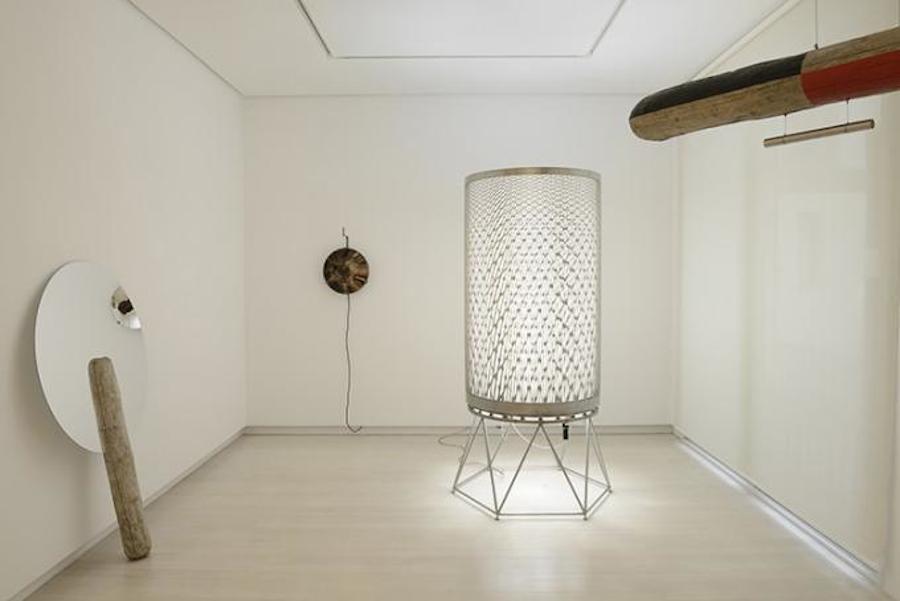
To understand this artist is to understand the reality of our contemporary world. He works with nature to try to unravel its mysteries — he has set up an experimental laboratory in his Berlin studio, where a team of architects, scientists, artisans and art historians help him to execute his ideas, transforming them into the finished pieces that we see in museums and galleries. He is always on the lookout for new ways of merging science and nature, equally interested in both the technical and physical aspects of art, the organic and inorganic. We could say his work can be synthesized as a constant search for the artistic representation of life’s natural phenomena.
His commitment to art extends to education too — Elíasson is also a professor at The Berlin University of Arts. In 2009 he created the Institut für Raumexperimente (Institute for Spatial Experiments), and since then he has been responsible for providing students with his own brand of innovative art education. His comprehensive training approach has led him to take trips with his students in order for them to better understand their relationship with their surroundings. Out of this approach came the Little Sun lamp, a small solar-powered light source that has allowed him to bring light to those remote places of the world that are not connected to the power grid.
When taken as a whole, Ólafur Elíasson’s work is once again a reminder that there can be no meaning in a world without art.
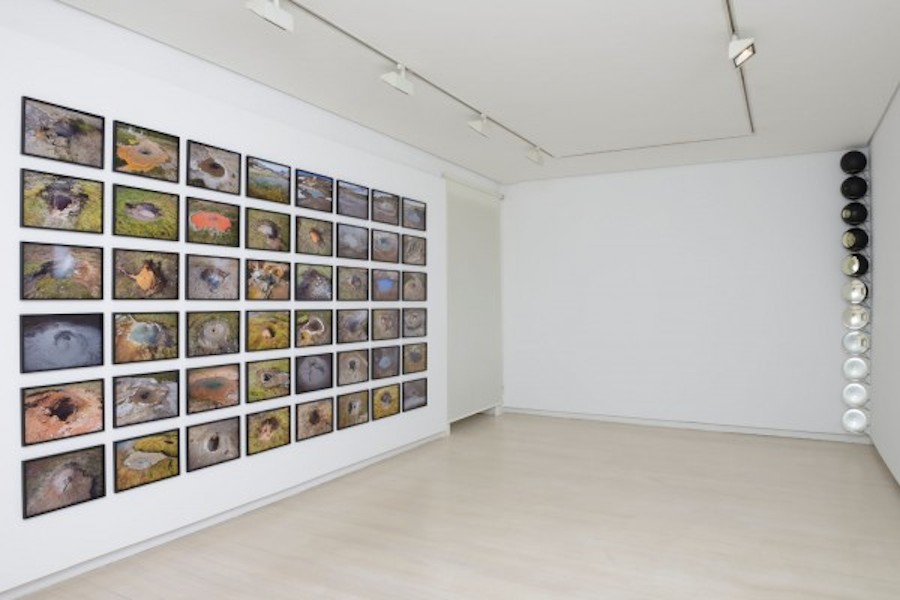
- Details
- Written by Alejandra de Argos
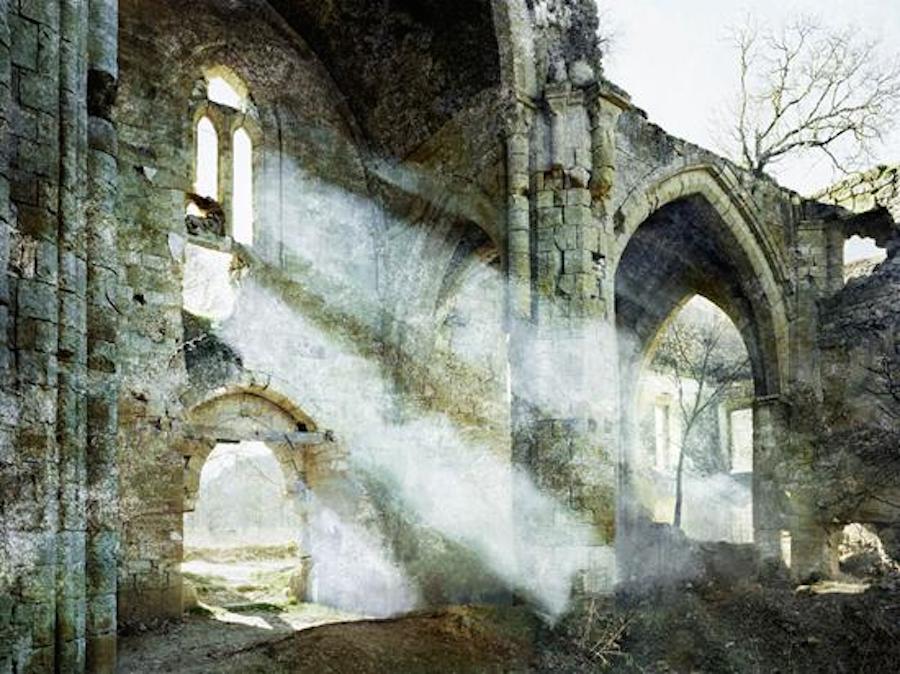
Madrid’s Galería Caylus is for the first time hosting a photography exhibition by a Spanish photographer, Lux Oxidada (Rusted Light) by Fernando Manso (born in Madrid in 1961) — rust and light being the two distinct elements which form the common thread running through the photographs.
Fernando Manso, in this exhibition, is essentially immortalizing select moments that he has managed to capture when certain specific conditions — stipulated by himself — were met, something which at times has made him wait an incredibly long time for the exact moment to present itself.
Other photographs require his own personal intervention, added to the set of natural requirements which he must wait for, in order to obtain just the right balance and harmony that he wants to express to his viewers.
Manso introduces one of his own techniques to the immediacy of the photographic medium: he explained to me that of two copies of a photograph, one is sharp and realistic, and the other is left to suffer the effects of weather, creating an entirely new and beautiful vision of the world.
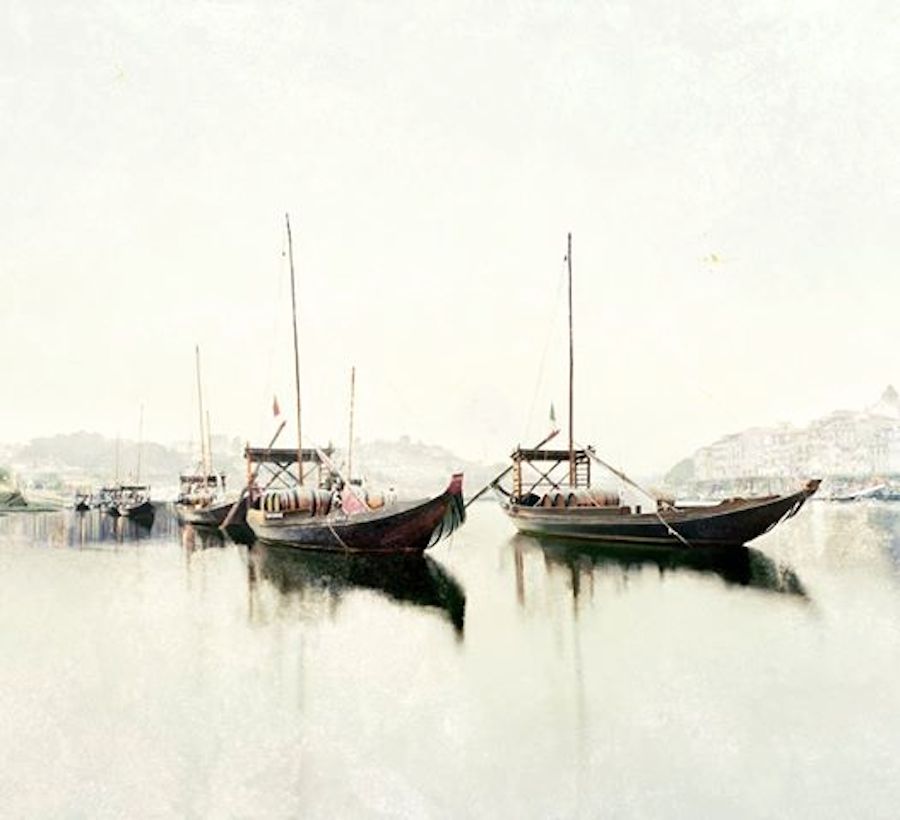
After the camera itself (in this case a camera with bellows for focusing), the next most important element of photography is the vision of the photographer. And then, of course, there’s the level of creativity in the composition.
I loved this exhibition — I found that it truly lived up to the poetry of its title. The peace and loneliness of its landscapes of white veil woods; the cold beauty of the Palacio de Cristal’s glass and metal; the romanticism of its stone monuments, mould and light some, fog and magic others; taverns full of rust and nostalgia, nostalgia suspended in the air all around.
Fernando Manso, a photographer of beauty and of sensations, began his career two decades ago. The attraction, I think, lies in how close photography and painting are in his work. He has edited five books and his photos have travelled in exhibitions around the world. I strongly recommend a visit to the gallery and the ensuing journey that visitors will embark on through his work, the work of a great painter of beauty.
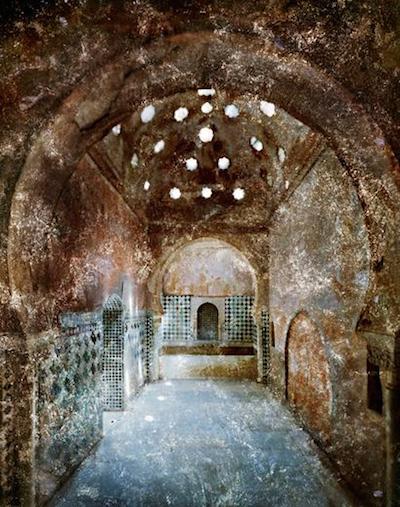
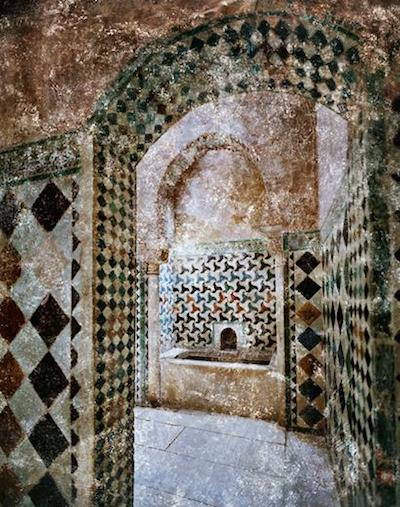
FERNANDO MANSO
"LUZ OXIDADA”
Tuesday, February 11, 2014 - Friday, April 4, 2014
Calle de Lagasca, 28 28001 MadridSpain
- Details
- Written by Alejandra de Argos
 |
| Jake y Dinos Chapman. Foto:A de Argos |
The Chapman brothers’ “Come and See” exhibition invites viewers to reflect on the meaning of art and its countless ramifications.
The Chapmans are part of the Young British Artists group, and a large part of their work is inspired by the Old Master Francisco de Goya. The artists’ desire to recreate Goya’s “flat” paintings in three dimensions is evident among the work on display.
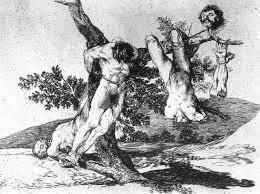 |
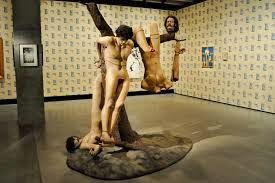 |
These photos show Goya’s etching on the right, and the related Chapman sculpture on the left. Although these works were not included in this exhibition at London’s Serpentine Gallery, it does go to show the relevance and modernity of Goya’s work, which dates back to around 1810.
A number of years ago the two brothers obtained one of Goya’s series of anti-war etchings titled “The Disasters of War”, and replaced the victims with clowns and puppets: an example of the irreverent black humour so often present in their work.


What surprised me the most in this visit, however, was seeing a group of people with Down syndrome accompanied by their carers. I don’t doubt that such an exhibition could be meaningful to them, although I struggle to see how. At one point one of them insisted that their carer take a photo of this piece for them.
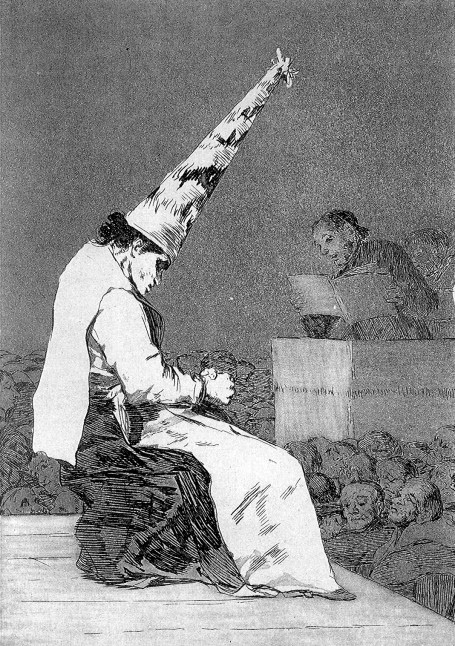 Sex, religion, morality and culture are the main themes dealt with in their work, and their tone is grotesque, aggressive, provocative. In particular, references to morality can be seen in a series of life-size figures dressed in white tunics and hoods, looking down at what lies before them - a nod to Goya’s etchings depicting the Spanish Inquisition (this dress is also typically seen among penitent brotherhoods during Spain’s Holy Week). With these etchings Goya was speaking out against the Inquisition and superstition in general. The Chapman brothers are also creating an analogy with the robes worn by the Ku Klux Klan, the American far-right white supremacy group. This serious ideological tone is somewhat eased by the smiley faces present on the tunics, and by their grotesque sandals and colourful socks.
Sex, religion, morality and culture are the main themes dealt with in their work, and their tone is grotesque, aggressive, provocative. In particular, references to morality can be seen in a series of life-size figures dressed in white tunics and hoods, looking down at what lies before them - a nod to Goya’s etchings depicting the Spanish Inquisition (this dress is also typically seen among penitent brotherhoods during Spain’s Holy Week). With these etchings Goya was speaking out against the Inquisition and superstition in general. The Chapman brothers are also creating an analogy with the robes worn by the Ku Klux Klan, the American far-right white supremacy group. This serious ideological tone is somewhat eased by the smiley faces present on the tunics, and by their grotesque sandals and colourful socks.
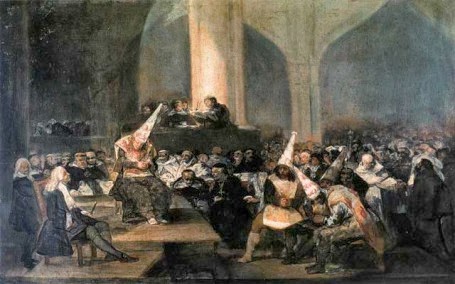
What pushed me to visit an exhibition displaying humanity’s darkest moments? Mostly out of a sense of curiosity, influenced by a powerful art market whose job it is to create tastes and spark our interest. I wanted to know why this kind of art had become so successful, why it had achieved critical acclaim. And secondly, the art on display here forces me to reimagine my own ideas of political correctness and beauty - it’s taboo-shattering, and provocation is a key component of the art of our day. Having said that, once inside the exhibition I found the crudeness a little excessive. I ended my visit feeling that it was all too showy, too self-aware - the same artist-viewer dialogue of social and cultural critique could have been established in a much less aggressive manner.
It’s difficult to explain. What one finds here is ugly, aggressive, violent and unpleasant. The art mercilessly forces you to face the basest and crudest sides of human beings, leaving out civilization, culture or any of the other more constructive capacities of humanity which differentiate us from the rest of the animal kingdom. A real-world depiction, in all its rawness, of Twain’s quote: “Of all the creatures that were made, man is the most detestable. Of the entire brood he is the only one--the solitary one--that possesses malice.”
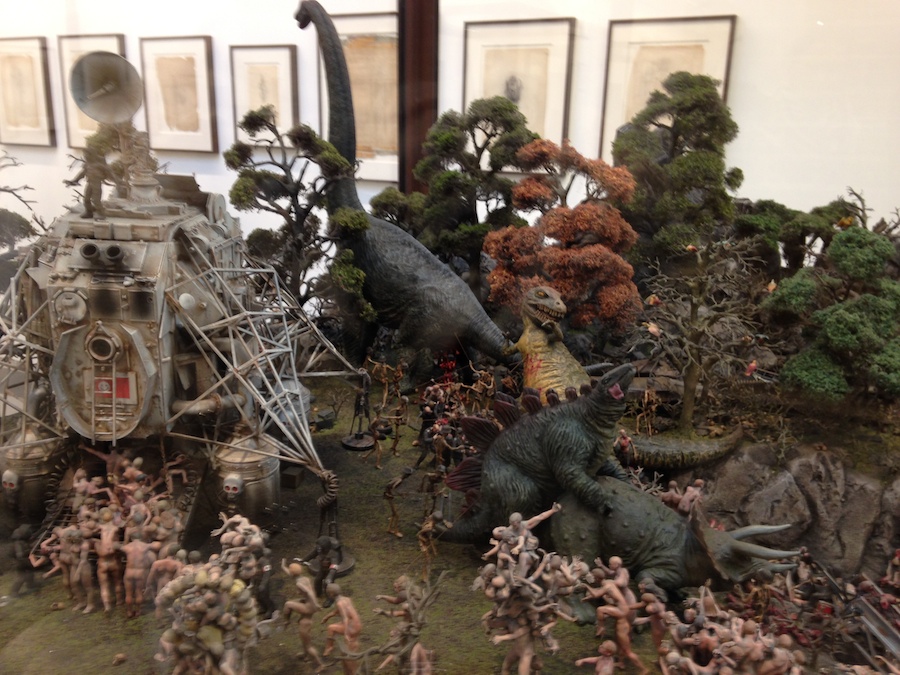

Of all the exhibits on display, I most enjoyed the oil paintings. The majority of them belong to the White Cube gallery.
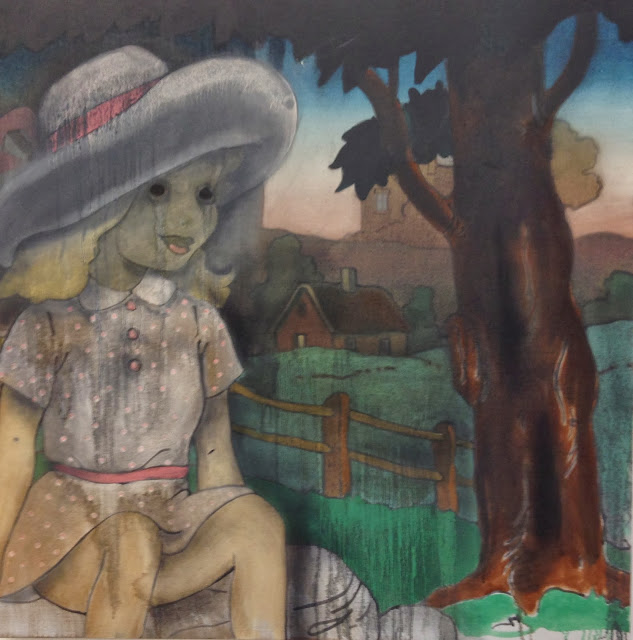

One of the rooms was dedicated to works made of cardboard.
|
|
|
Foto: Alejandra de Argos |



Duchamp famously said that art is in the eye of the beholder, not in the artwork itself. Art is and has always been a means of communication between the artist and the viewer. Francisco de Goya, the Chapman brothers: one message, two centuries...
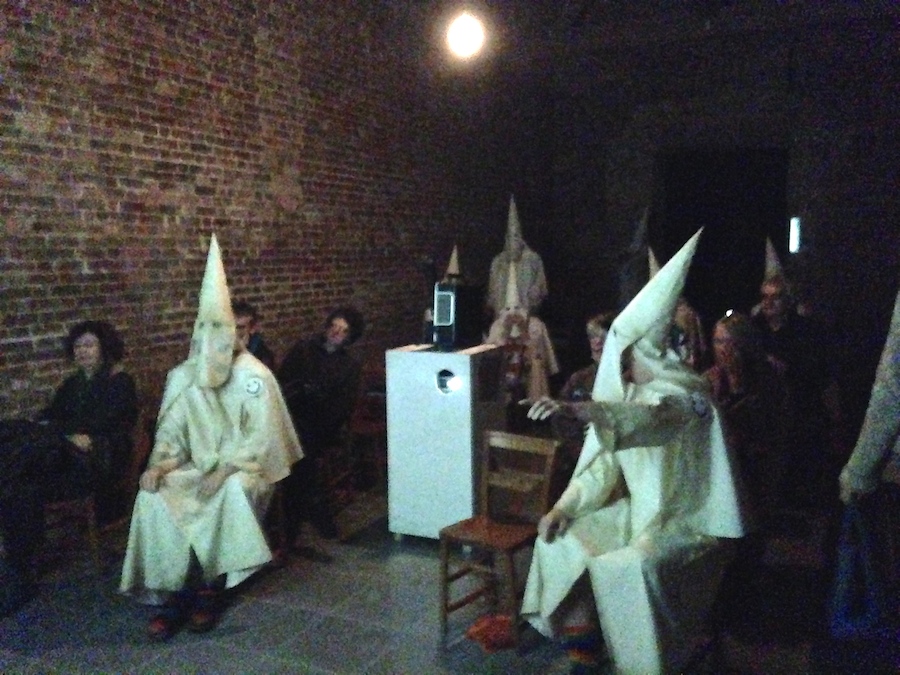
Jake and Dinos Chapman. "Come and See". From November 29, 2013 to February 9, 2014.
- Details
- Written by Alejandra de Argos


This wonderful exhibition of Adel Abdessemed, artist of Argelian origin, can be seen at the Museum of Modern Art in Doha, Qatar, until January 5, 2014. The exhibition opens our eyes to the violence that is present in the world. Adel’s work focuses on art as as a tool to condemn violence, and through his work he describes himself as an artist of action. This is Mathaf’s most significant project to date.
At the entrance to the museum we see La Vase Abominable, a vessel of uncommon proportions resting on a base made of bombs. A vessel and weapons: two of the first artifacts created by Man are united as symbols of our contradictory human condition, creation and destruction.
In the entrance we can also see a video projection called Ayaï, where the action of a bare foot stamping violently on a rose in a cobblestone is repeated endlessly. A curious visual effect is created by the complete destruction of something that evokes beauty.
Under the video we have the Soldaten. Abdessemed sees them everywhere, from Northern Ireland at the start of the 90s to modern-day Afghanistan. For security reasons. For our own safety. Soldiers represent the continuous wars of our time.
Lastly in this room is Practice Zero Tolerance (2006), a terracotta car that seems to be carbonized, in stark contrast against the white walls. An image that reminds me of the many scenes of terrorist attacks in the media.

The next room certainly doesn’t leave one indifferent. East of Eden is the first memory of a field of flowers transformed into knives.
“What a strange metamorphosis is imposing itself into our memory. What a vast and repeated crime has been committed against us, against our bodies, against the soil that we tread on, transforming old dreams of goodwill and happiness into waste, leading to soil destroyed by evil, violence and its signs, for a moment together again in a figure similar to the archetypal garden”.
On the far side of the room, a video (Mémoire) is being projected of a baboon placing letters on a wall, spelling out "Hutu" and "Tutsi" - the two ethnicities which in 1994 caused the Rwandan genocide. Memory, memory everywhere...
Suddenly I walked into a room and the impact was shocking. I found myself surrounded by a human installation tile covering the huge walls. I assume that the artist had to be performed exclusively for the exhibition. Room of a man as a builder. Shams is the name of this huge and very powerful installation. Man as a builder of monuments to perpetuate the memory. The archetype of the artist as a great builder. I found this installation as a kind of tribute to the millions of men who have helped build our memory and which are invisible.memoria y que son invisibles.
 |
 |
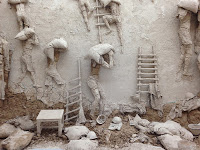 |
 |
Little Pot is a series of everyday jugs made of different materials (clay, rubber, lacquer, jade...). "Gift of love", the promise of time yet to come, perhaps.
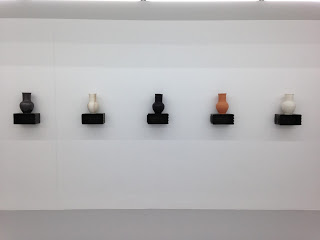 |
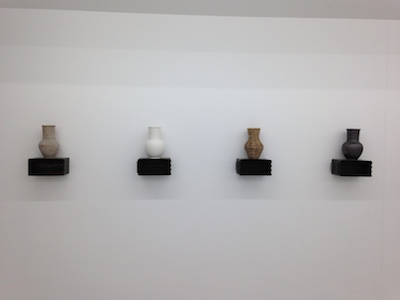 |
Room of the eternal, or Beyond time. Julie. D'un horizon á un autre. This refers to the concepts of eternity and the infinite, two terms which have much to do with the figure of the artist, since his work is related to space and time. The artwork represents his wife made out of salt stone on a rock from Qatar.
“In art, eternity and the infinite are related to the notion of beauty, since in life, beauty is similar to happiness”.
And finally, a golden panel with its four daughters as a dreamt memory of a time that is to come, L'Âge d'Or.
“L’Âge d’Or is a heavenly state where the fatigue of a life of effort and its subsequent unhappiness are banished. The Golden Age appears before civilization and its malaise. It belongs to the realms of myth and mythology…” Pier Luigi Tazzi
|
|
|
|
|
|
Recommendations:
Even in the event of not being able to visit the exhibition, I recommend buying its catalogue. The majority of the information in this post comes from there. As well as explaining Adel Abdessemed’s work and thoughts in a very profound and precise fashion, it is also quite simply a delight for the soul. Art and philosophy are once again united with the purpose of attempting to comprehend our own existence.
- Details
- Written by Alejandra de Argos
Yesterday saw the opening of a new exhibition at Madrid’s Ivorypress gallery of designer and architect Ron Arad’s work. Elena Foster is the gallery’s founder and current director, fulfilling her role admirably. The gallery’s New York garage-style space is appropriate for the scale and scope of Arad’s surprising world.
The first item you see as you enter is a ping-pong table in stainless steel and bronze: the structure and design of its lines is a work of beauty in its own right. Already from this first item, the artist’s incredible technical skill is apparent.
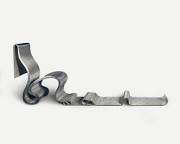
The exhibition invites us to appreciate the breadth of the artist’s work, which spills out into architecture, furniture design, lighting and sculpture. His collection of designer chairs is fascinating, from his very first chair, the Rover Chair, result of two ready-mades, a Rover 200 seat on top of a Kee-Klamp frame; spectacular chairs such as the Narrow Pappardelle and all its poetry; the Blo-Void, which unapologetically abandons all functionality to become a statue; or the singular Gomli, named, according to the artist, after his friend and fellow artist Antony Gormley designed with comfort in mind while eschewing all preconceived ideas of beauty.
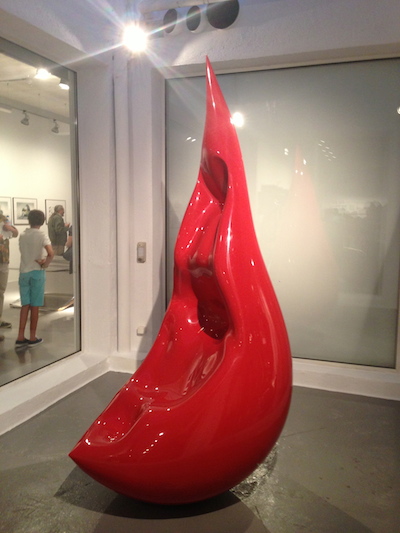
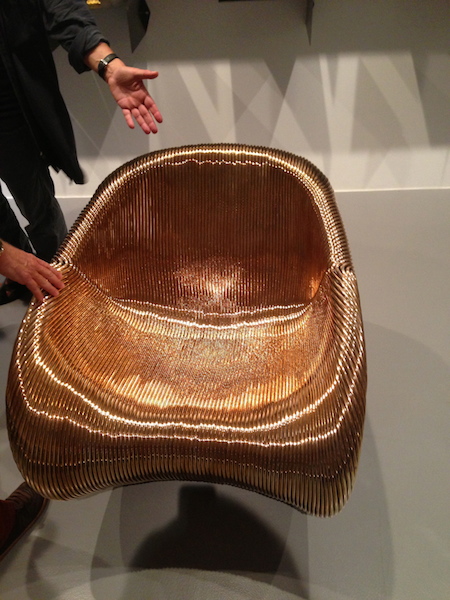
Arad is a versatile, highly creative artist, and skilled in the use of his materials which, through movement, are ascribed a life of their own. He likes to experiment with steel, aluminium, polyethylene or corian, playing around with them liberally to achieve often unexpected and delightful results. His shelf units are just as surprising. The stainless steel map of China is exceptional, and carries great visual impact upon first viewing. No Bad Colours, a workstation containing innovative technology that allows it to change colour, is incredibly creative and breaks new ground in design. But the real star of the show was Restless: movement, harmony and design all coming together in one great art piece.
Blame the tools, a replica of a Fiat 500, architecture projects, eyewear design… all form part of the artist’s fascinating world.
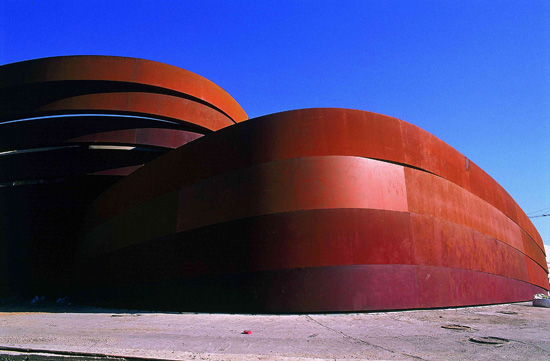
In terms of his architectural work, I would pick out the brilliant Design Museum Holon near Tel Aviv, the artist’s hometown. This is an impressive spiral-shaped construction in Corten steel which surrounds the museum, almost like a huge metal sculpture. A great example of how architecture, sculpture and design can come together harmoniously in a common public space.
The exhibition embraces and embodies Arad’s motto: “My only principle: don’t base anything you do on what already exists”. This and much more can be enjoyed at Ivorypress, thanks in no small part to Elena Foster’s continued efforts to introduce us to the great artists and thinkers in design, architecture or painting.
- Details
- Written by Alejandra de Argos
One of this year’s Venice Biennale’s most remarkable exhibitions was undoubtedly Italian artist Rudolf Stingel, held in the Palazzo Grassi.
His first exhibition in the United States, which I still remember vividly, took place at the Museum of Contemporary Art in Chicago in 2007. The artist had covered the walls of a room with Styrofoam coated in aluminium, and visitors were invited to physically interact with the installation by scratching parts of the aluminium coating off the wall, thereby leaving their marks on the piece with writings, drawings or scribbles. I’ve tried and failed to remember what mark I left on the wall: probably nothing of note.
Stingel’s work is characterized by an interest in having the viewer actively participate in the creative process. On this occasion, Stingel’s large exhibition takes place in the 18th century Palazzo Grassi, where the artist has created a fascinating installation in which the palace’s floors and walls have been entirely covered by an enormous carpet (a reference to Freud). Also on display are his monochromatic paintings and paintings of Gothic and Baroque saints, which when juxtaposed with the reference to psychoanalysis helps to create a bizarre and unexpected viewing experience. The paintings and their connotations, with their idea of looking back at a past moment in time, may be implying an analogy with Freudian therapy. I was particularly struck by a side-view image of Christ’s crucifixion: the angle chosen by the artist to represent this iconic image is uncommon and one that I had not seen before. I found it a very disturbing piece.
Combining the full-space carpet installation with the paintings on the walls leads to a feeling of unease. It’s disorienting to be looking at the paintings on a carpet background which should really belong to the floor one is standing on, and one’s perception of the painting is certainly affected. Viewers tend to feel somewhat confused.
Stingel is interested in the viewer’s perception of art, something clearly seen in this exhibition. Conceptual art, installations and hyperrealism are the tools he uses in his mission to explore the creative process. A provocative, compelling artist whose prolific and heterogeneous output is well worth taking the time to study in depth.
- Details
- Written by Alejandra de Argos
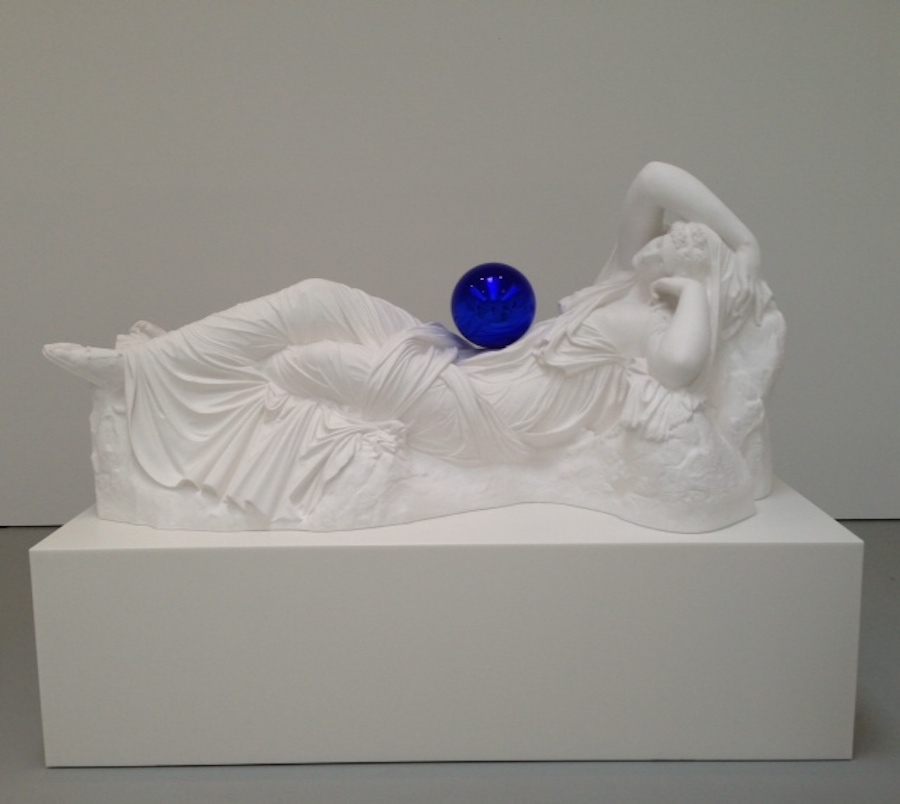
That’s one way of describing Jeff Koons’ latest work, currently on show at the brilliant David Zwirner gallery in Chelsea, New York City.
As I walked into the white-walled gallery, I was overwhelmed by the unexpected sight: numerous life-sized Greco-Roman sculptures surrounded me in a lively, curious dance. Hercules, Aphrodite, Narcissus, Dionysius… they were all there, torn from their world of antiquity and relocated to modernity, where the concept of time simply fades away. All the sculptures are made out of pure white plaster, and each of them is holding a perfect sphere made of electric blue glass, giving each sculpture an incredible sense of balance. The stark chromatic contrast between the blue and the white, as well as the impact from the sheer size of the figures, lends the works a very contemporary look and feel.
The idea of the glass balls, which are painted from the inside, comes from the artist’s childhood in York, Pennsylvania, where middle-class families would place them in their gardens. They would gradually become status symbols: the balls’ glassy, mirror-like surface entrancing their owners with their all-seeing power.
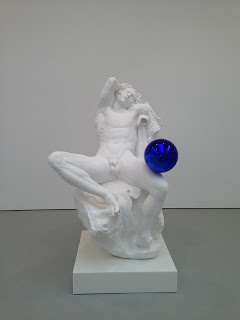
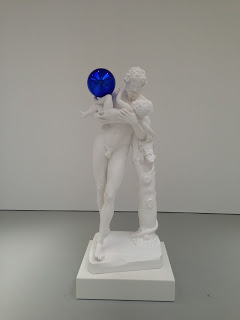
Jeff Koons, figurative sculptor and artist, has created a collage of pop culture and art history. Here is the artist speaking of Gazing Balls:
“I had the idea for Gazing Balls for decades. I wanted to show the affirmation, the generosity, the sense of place and the pleasure of the senses that the Gazing Balls represent. The Gazing Balls series is based on the idea of transcendence. Our realization of our own mortality is an abstract thought - from there, we can reach an understanding of the outside world, our family, our community, we can engage in an open dialogue with humanity at large beyond the present moment. The Gazing Balls series is about the philosopher’s vision; starting from the senses, and directing our gaze out towards the eternal through pure form and ideas.”
The New York Times calls Koons the most important American artist since Warhol. I believe he is a significant artist of our time: he seems to possess an extraordinary ability to capture and express the values and desires of the modern age. The visions of our contemporary artists allow us to see our own societies and their woes reflected back at us; societies infected by complacency, consumerism, immediacy, new technology, utilitarianism. By understanding them, or at least acknowledging them, we are empowered to create a different future for ourselves.



